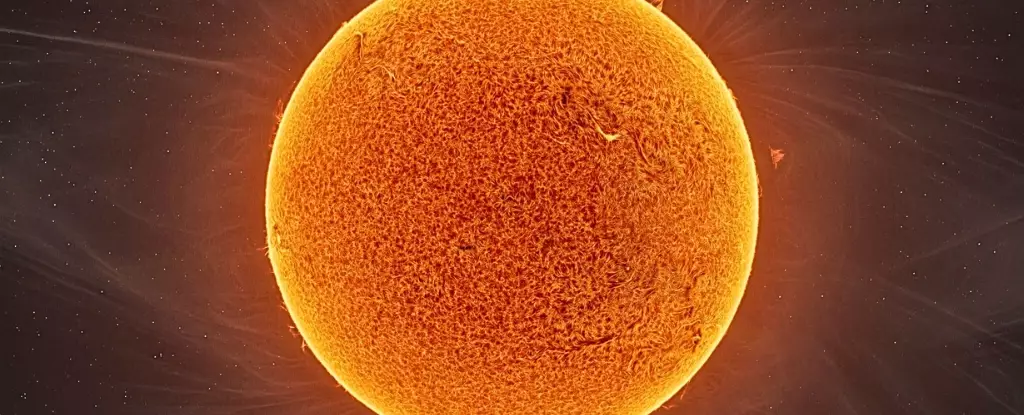The universe has always been a stage for magnificent displays, filled with wonders yet to be fully unveiled. Among its most captivating phenomena are starquakes—massive vibrations caused by the eruption of gas bubbles beneath a star’s surface. These cosmic tremors produce a unique “music,” offering a wealth of insights into both the lifecycle of stars and the historical narrative of galaxies. Recent breakthroughs in research, taking advantage of the mighty Kepler space telescope’s K2 mission, have expanded our comprehension of these intricate vibrations and their implications for stellar evolution.
Starquakes are not simply an astronomical curiosity; they are profound indicators of the unseen dynamics beneath a star’s skin. They occur in stars endowed with a bubbling outer layer, somewhat reminiscent of a pot of water boiling over. The complexity of these stellar symphonies allows scientists to derive frequency signatures, which can reveal nuanced details about a star’s internal changes and lifetimes. While previous studies have delved into the vibrations produced by stars in clusters like M67, the revelations about how these frequencies can be interpreted—and misinterpreted—have served to reshape our understanding of stellar life.
Clusters of Wisdom
Clusters of stars, particularly those like M67, provide astronomical treasures. Stars that formed together share similar ages and compositions, offering a natural laboratory for researchers aiming to decode stellar evolution. Observing the “music” of these stars empowers us to informatively compare them, considering their chemical similarities to our own Sun. This comparative analysis opens up discussions that extend beyond individual star characteristics; it provides us a glimpse into the evolutionary tapestry of our Milky Way galaxy.
What we have learned from analyzing starquakes in these clusters is groundbreaking. No longer can we regard the vibrations from older stars simply as irrelevant echoes of a star’s past energy production. As scientists measured what is termed the “small spacing” in star frequencies, they stumbled upon revelations that challenge fundamental assumptions. The alteration in vibrational ‘notes’ as a star progresses through its lifecycle reveals complexities in the fusion processes occurring deep within.
Unexpected Discoveries and Their Implications
In a twist that could rival a cosmic drama, these researchers uncovered something extraordinary. While it had been assumed that the small spacings—variations in frequencies—of aging stars provided little value, massive new insights emerged. As the layers of burning hydrogen shifted within red giants, the changes echoed through their seismic vibrations, exhibiting distinct characteristics based on the star’s mass and composition. The “skipping record” phenomenon of vibrations stalling at a certain stage of a star’s evolution signals a deeper understanding of how these massive celestial bodies operate.
The frequency stalling occurs when a star’s outer layer becomes overwhelmingly thick, significantly affecting how sound waves traverse the star. For scientists, this is not merely a technicality—it’s a gateway to understanding not just one star’s fate, but the interconnected pathways of stellar evolution across the universe. Such findings are not only catalyzing a reevaluation of existing stellar data, but they are also akin to discovering a new musical scale, inviting astronomers to “listen” differently to a raspy old record.
A New Era in Galactic History Reconstruction
If the cosmos serves as our canvas, starquakes provide the unique brushstrokes that allow us to paint a clearer portrait of galactic history. The Milky Way, shaped through gravitational dance with smaller galaxies, holds within it countless stories embedded in the stars. Understanding how to read these stories through the symphony of starquakes gives an unparalleled perspective on our own stellar neighborhood and the evolutionary record of the universe.
Age estimates derived from analyzing star vibrations enhance our ability to construct a robust timeline of the galaxy’s formative epochs. Given that clusters like M67 mirror our Sun’s future evolutionary trajectory, these insights help astronomers predict and prepare for the long-term changes our own star will encounter. In essence, starquakes do not merely resonate through stars; they echo through time, connecting the past with an uncertain future.
The harmonies and dissonances found in starquakes induce a deeper engagement with our galaxy’s history and offer a renewed sense of wonder in the face of the unknown. Each oscillation represents a verse in the celestial melody, urging us to listen closely, decipher its lyrics, and appreciate the cosmic orchestration that has continued for billions of years. Scientists now have a transformative tool at their disposal to revisit previously collected data—with a new ear to the ground and a readiness for new revelations. The universe is a concert hall, and the starquakes are the beating heart of its eternal composition.


Leave a Reply